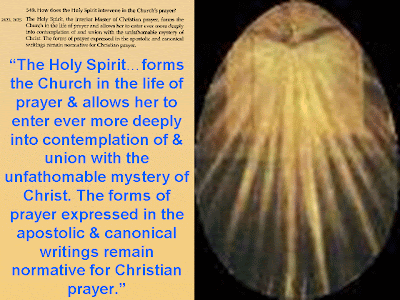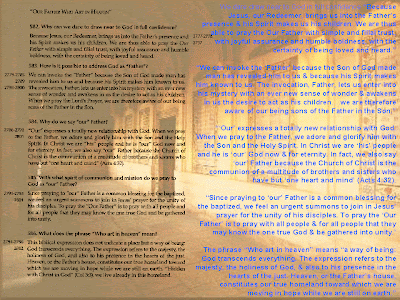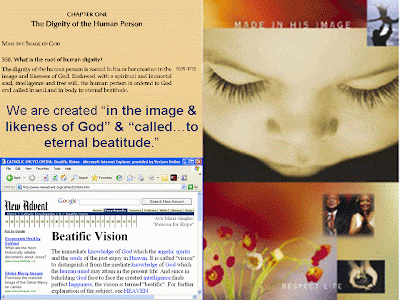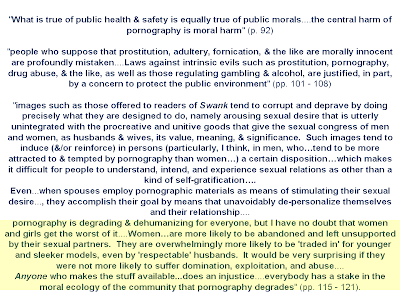
 (The unedited, origial version:)
(The unedited, origial version:)Your Valentine’s Day edition featured an op-ed by John Seager of Population Connection (nee, the Zero Population Growth Institute). As per his organization’s web site, Seager worked for the EPA and then-Congressman Peter Kostmayer, after receiving his B.A. in political science. He has succeeded Kostmayer as President and CEO. While Seager has no reported credentials in demographics, he’s darn tired of people taking up so much space: “As population increases, the challenge of slowing climate change becomes ever more difficult….Global warming is too big a problem to be solved by energy experts alone. It's about people….It's about the very personal decisions we make about whether, when, and how many children we choose to have.” While it may come as news to Seager, fertility in the United States has hovered below the rate needed for natural replacement, since the mid-1970s! In fact, we have seen unprecedented declines in world fertility levels, over the past three decades!
Historically, anti-people stances have led to scapegoating. Way back in the eighteenth century, followers of Anglican priest Thomas Malthus began to forecast dire consequences from the birth of additional people. Perhaps unwittingly, this ill-informed projection provided an easy rationalization for doing little or nothing in the face of other people’s suffering. In the mid-nineteenth century, Irish people perished from potato famine, in spite of an abundance of food stuffs in British warehouses. As reported by the Irish Famine Curriculum Committee (1998), “After mass starvation, death, eviction, and large scale emigration, the British Census Commissioners proclaimed in 1851 that Ireland benefited from the Famine.”
Experts on world hunger advise us that we have more than enough food to go around; it is poor distribution and selfish choices by the powerful that lead to famine. Yet, the Malthusian specter of overpopulation continues to defy demographic data and appeal to our basest selves. In addition to food supplies, people are now wrongly accused of threatening the environment. Malthusian rhetoric misses the truth that our fellow humans are our most wonderful assets and not our enemies. Rather than people, it’s jet skis, SUVs, multiple car households, and highway expansion which pose the true threats to our land and water. We need to be making choices, which benefit all humanity. Along those lines, kudos to the Courier Times for its Valentine’s Day editorial in support of Amtrak and rail transit.
To anyone who does not appreciate the importance of rail transit, let me say two words – Long Island. During Long Island’s post World War II housing boom, highway expansion overruled efforts to provide inexpensive, public transit. In the 1960s, a WOR radio traffic reporter began referring to the Long Island Expressway as “the world’s longest parking lot.” In the twenty-first century, Long Islanders must correct the inattention that was previously given to rail transit.
Meeting our own housing boom, Bucks County need not repeat Long Island’s mistakes. We need rail transit which will provide an affordable alternative to clogging our roads with cars:
· In the early 1990s, SEPTA floated the idea of establishing passenger rail service between Lower Bucks and Downingtown, along an existing freight line. The time has come for this idea to be resurrected.
· Though I’ve bicycled from New York City to Lower Bucks on several occasions, I recognize that “Rails to trails” is a shortsighted idea. Rather than converting rail lines to recreational use, we should support SEPTA’s efforts to reinvigorate abandoned services, such as that between Quakertown and Center City.
· As many Bucks Countians commute to New York City, we have a vested interest in the viability of the New Jersey Transit system. We would be wise to support NJT’s efforts to establish a new rail tunnel into Manhattan, as well as the resurrection of the West Trenton line.
· Though there is presently no station, NJT’s trains from NYC already come to rest in the Morrisville yards. A SEPTA-financed station in Morrisville would easily attract Bucks County commuters who currently pay $105 per month to park in Trenton.
References
· Food First (1998), 12 Myths About Hunger, <www.foodfirst.org/pubs/backgrdrs/1998/s98v5n3.html>
· Irish Famine Curriculum Committee (1998), The Great Irish Famine (revision) <www.nde.state.ne.us/ss/irish/irish_pf.html>
· Mobilizing the Region (1999), Parochial Pols Limit NJ Train Capacity
<www.tstc.org/bulletin/19990402/mtr21406.htm>
· New Jersey Transit (2004), System Expansion Projects, <www.njtransit.com/tm/tm_servlet.srv?hdnPageAction=CapImprProjectsTo>
· SEPTA (2006), SEPTA Capital Improvements in Bucks County
<www.septa.org/inside/reports/BucksCo200612.pdf>
· Trails.com (2007), Pennsylvania Rails-to-Trails <www.trails.com/stateactivity.asp?area=11832>
· Skoropowski, Eugene (1990), SEPTA studies cross county commuting -
Southeastern Pennsylvania Transportation Authority <www.findarticles.com/p/articles/mi_m1215/is_n7_v191/ai_9276797>
· United Nations (2003), World Fertility Report, <www.un.org/esa/population/publications/worldfertility/Executive_Summary.pdf>
· United States Census Bureau (2005), Fertility of American
Women, <www.census.gov/prod/2005pubs/p20-555.pdf>
· University of California Museum of Paleontology (2007), Thomas Malthus (1766-1834) <www.ucmp.berkeley.edu/history/malthus.html>


































































































































